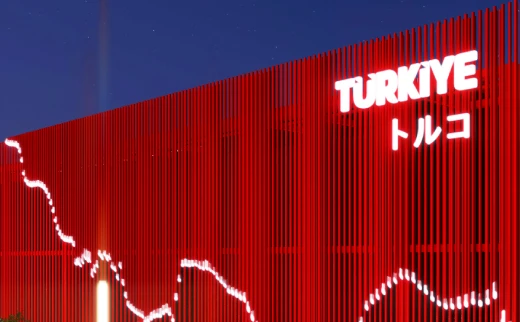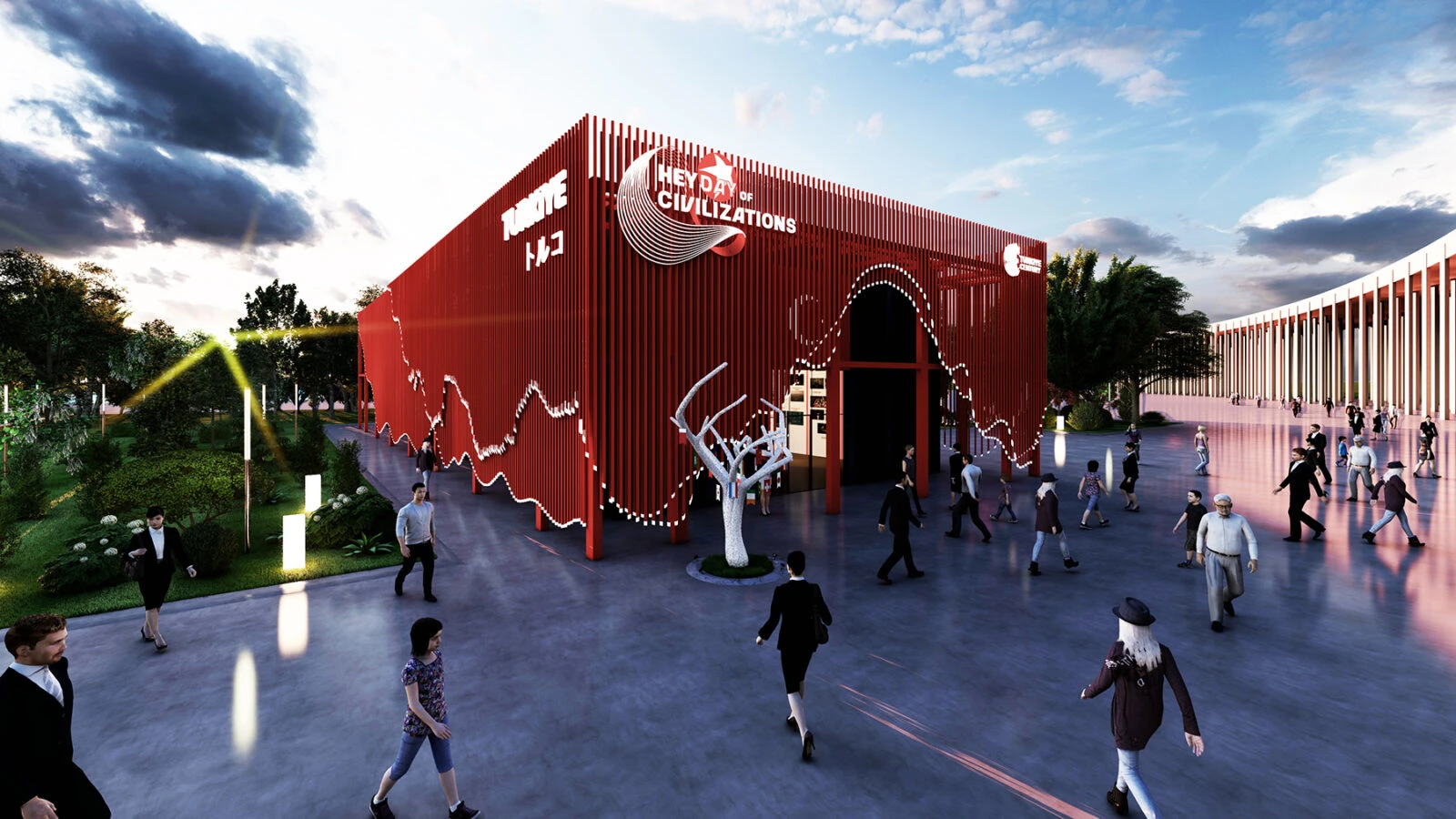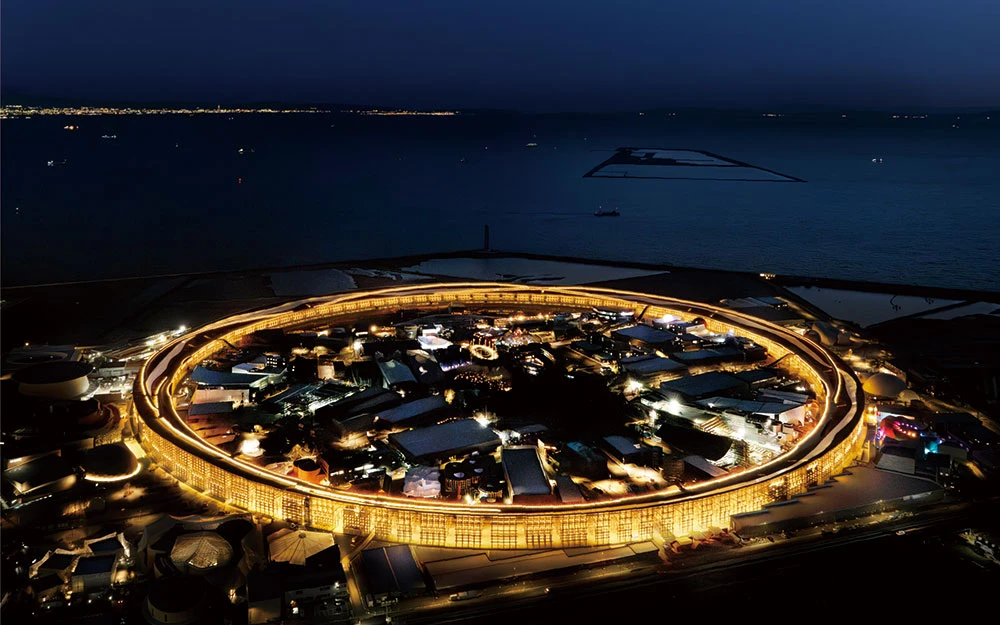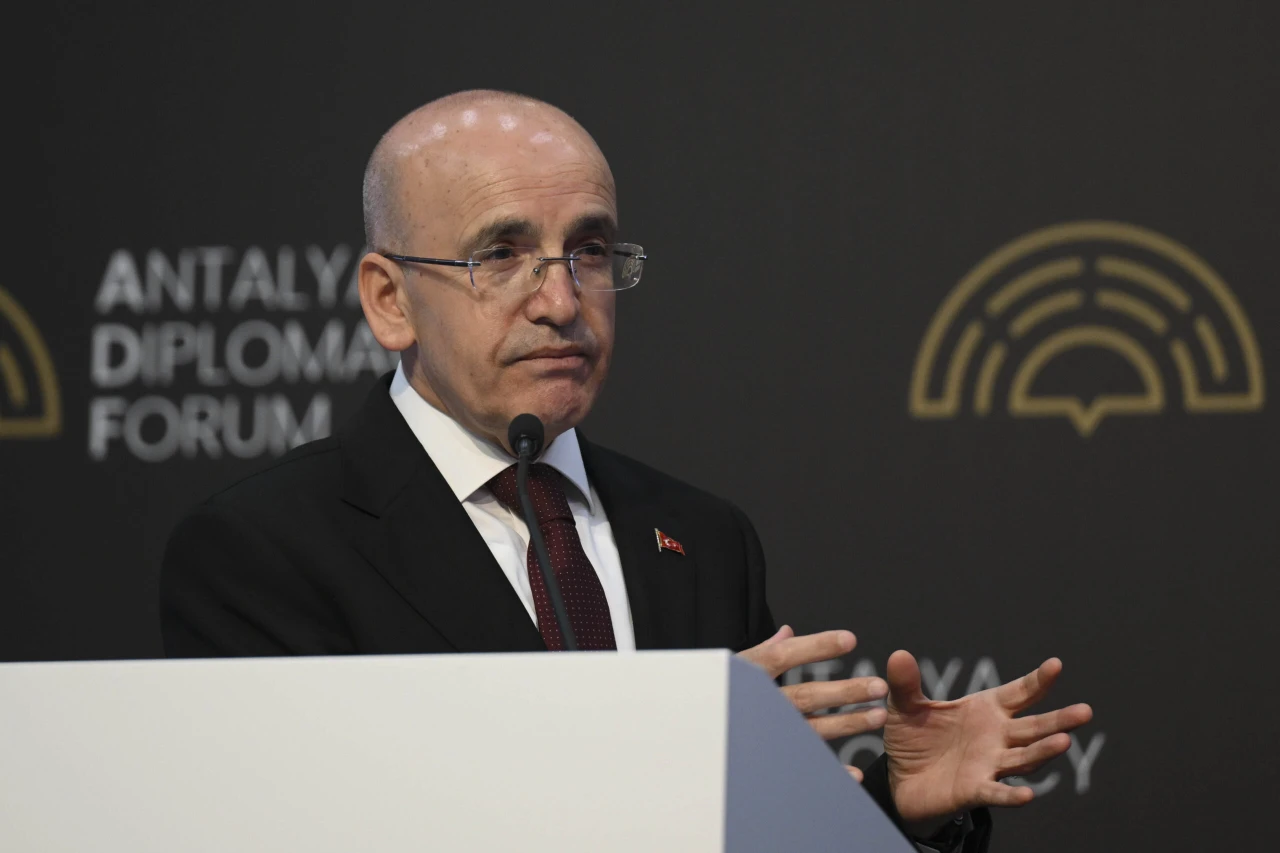Türkiye marks national sovereignty and children’s day at Expo 2025
 Türkiye's striking red pavilion at Expo 2025 featuring dynamic illumination and bilingual signage in both Latin and Japanese characters in Osaka, Japan, accessed on April 13, 2025. (Photo via EXPO 2025)
Türkiye's striking red pavilion at Expo 2025 featuring dynamic illumination and bilingual signage in both Latin and Japanese characters in Osaka, Japan, accessed on April 13, 2025. (Photo via EXPO 2025)
Türkiye will mark its National Sovereignty and Children’s Day as “Türkiye’s National Day” at Expo 2025, Trade Minister Omer Bolat announced as the six-month global exhibition opened Sunday in Osaka featuring more than 160 countries and regions.
The 900-square-meter Turkish pavilion blends “rich cultural heritage with modern design elements,” according to Bolat, who emphasized the importance of the exhibition for showcasing Türkiye’s achievements in “economy, trade, services and technology.”
Türkiye pavilion showcases export-driven economic strategy
“We have a Turkish pavilion that everyone will be proud of,” Bolat said in Istanbul ahead of the event’s opening. The celebration planned for April 23 will highlight Türkiye’s national holiday at the international forum.

The exhibition’s opening comes as Türkiye pursues what Bolat described as an “outward-oriented growth model” for its economy. “We are in a rapid race to increase goods and services exports at all costs to achieve investment, production, employment and foreign exchange earning goals,” he said.
Bolat also addressed recent trade tensions with the United States during his pre-Expo comments, noting that while the 10% additional customs duty imposed by the U.S. “is not a positive development for us,” Türkiye has gained a relatively advantageous position as some competing countries face higher rates.
“We have taken action to create new opportunities in the U.S. market,” Bolat said, adding that Türkiye continues to pursue a $100 billion bilateral trade target with the United States through comprehensive policies.
World’s largest wooden structure hosts global exhibition
Expo 2025 is taking place on a sprawling waterfront site dominated by the Grand Ring, a wooden architectural structure with a 2-kilometer circumference that encircles dozens of national pavilions. Recognized by Guinness World Records as the planet’s largest wooden architectural structure, it cost 34.4 billion yen ($230 million) and was designed by architect Sou Fujimoto.

This marks Osaka’s second World Expo after the 1970 edition that attracted a record 64 million visitors before Shanghai’s event in 2010 surpassed that number. However, ticket sales have been slow this time, with 8.7 million sold so far against an overall target of 23 million.
Among the exhibitions drawing visitor attention are Japan’s display of a Mars meteorite never before shown to the public, the world’s longest sushi conveyor belt, and a beating “heart” grown from stem cells.
Unity theme amid global divisions
Japanese Prime Minister Shigeru Ishiba used Saturday’s opening ceremony to stress the importance of international cooperation. “Having overcome the Covid pandemic, the world now faces the crisis over many different divisions,” Ishiba told attendees.
The event’s mascot, Myaku-Myaku, a red and blue creature with six googly eyes, has overcome initial puzzled reactions to become popular on Japanese social media.
Ukraine is participating despite its dire financial situation caused by the war, with its pavilion reportedly displaying helmets used in the restoration of power facilities damaged during the Russian invasion. Russia announced in 2023 that it would not participate in the Expo.



